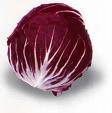 Download this recipe.
Download this recipe.
 3. Vary Your Veggies
3. Vary Your Veggies
Artichokes, beetroot, broccoli, garlic, leeks, radishes, spinach, and onions were the chart-topping antioxidant-rich veggies in a recent study -- though they’re not everyone’s favorites. Make sure the vegetables you eat the most are the most nutritious veggies you can eat.

If you're a broccoli lover, you've picked a winner. From a list of 10 of the most commonly consumed vegetables in the country, broccoli holds the top spot for having the most phytochemicals -- compounds everyone's urged to consume because they protect against chronic diseases. At the bottom of the list? Cucumbers, described by some people as "water you can eat."

The 9 runners-up to broccoli were spinach, yellow onions, red peppers, carrots, cabbage, potatoes, lettuce, celery, and cucumbers.

Red peppers actually beat out broccoli in terms of having the highest levels of antioxidants.

The same researchers also have rated 10 of the most popular fruits. Cranberries -- with the most phytochemicals and the most antioxidants -- topped that list, followed by apples, red grapes, strawberries, peaches, lemons, pears, bananas, oranges, grapefruit, and pineapple.
Food scientists aren't ranking veggies just to satisfy their curiosity—they’re contemplating a bioactivity index (BI) for dietary cancer prevention to help grocery shoppers quickly spot the fruits and veggies that have the biggest health benefits.
 4. Branch Out . . .
4. Branch Out . . .
. . . with new leaves. Some colorful red chicory or purple cabbage, for example, will add crunch to your salad -- as well as extra antioxidants.
Try this refreshing Arugula-Mushroom salad, chock-full of the good stuff we need:
Arugula-Mushroom Salad
A creamy garlic dressing is a nice foil for peppery greens. Can substitute watercress for arugula.

1 clove garlic, peeled
1/4 teaspoon salt
1 tablespoon lemon juice
1 tablespoon reduced-fat mayonnaise
1 tablespoon extra-virgin olive oil
1 tablespoon chopped fresh parsley
Freshly ground pepper, to taste
6 cups arugula leaves
2 cups sliced mushrooms
Toss together, serve.
Nutrition Information:
Per serving: Calories: 62; Carbohydrates: 3g; Fat: 4g; Saturated Fat: 1g; Monounsaturated Fat: 3g; Protein: 2g; Cholesterol: 1mg; Dietary Fiber: 1g; Potassium: 235mg; Sodium: 188mg
Nutrition Bonus: Vitamin C (15% daily value).
 Download this recipe.
Download this recipe.
Contribute to the Cook'n Club!
DVO would love to publish your article, prose, photography and art as well as your cooking, kitchen and nutrition tips, tricks and secrets. Visit the Newsletter Submission / Win Win for All section in our Forum for more information and details.


